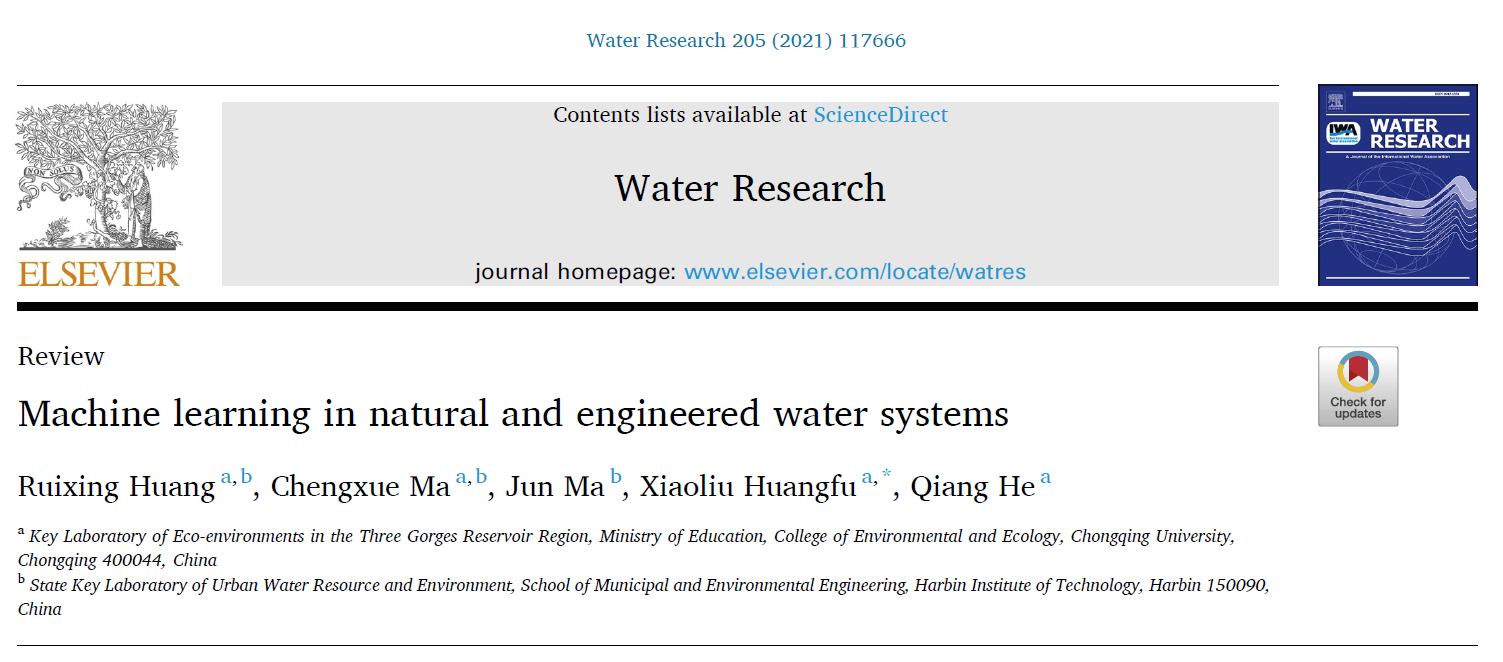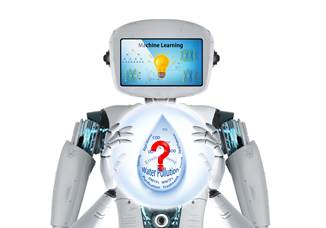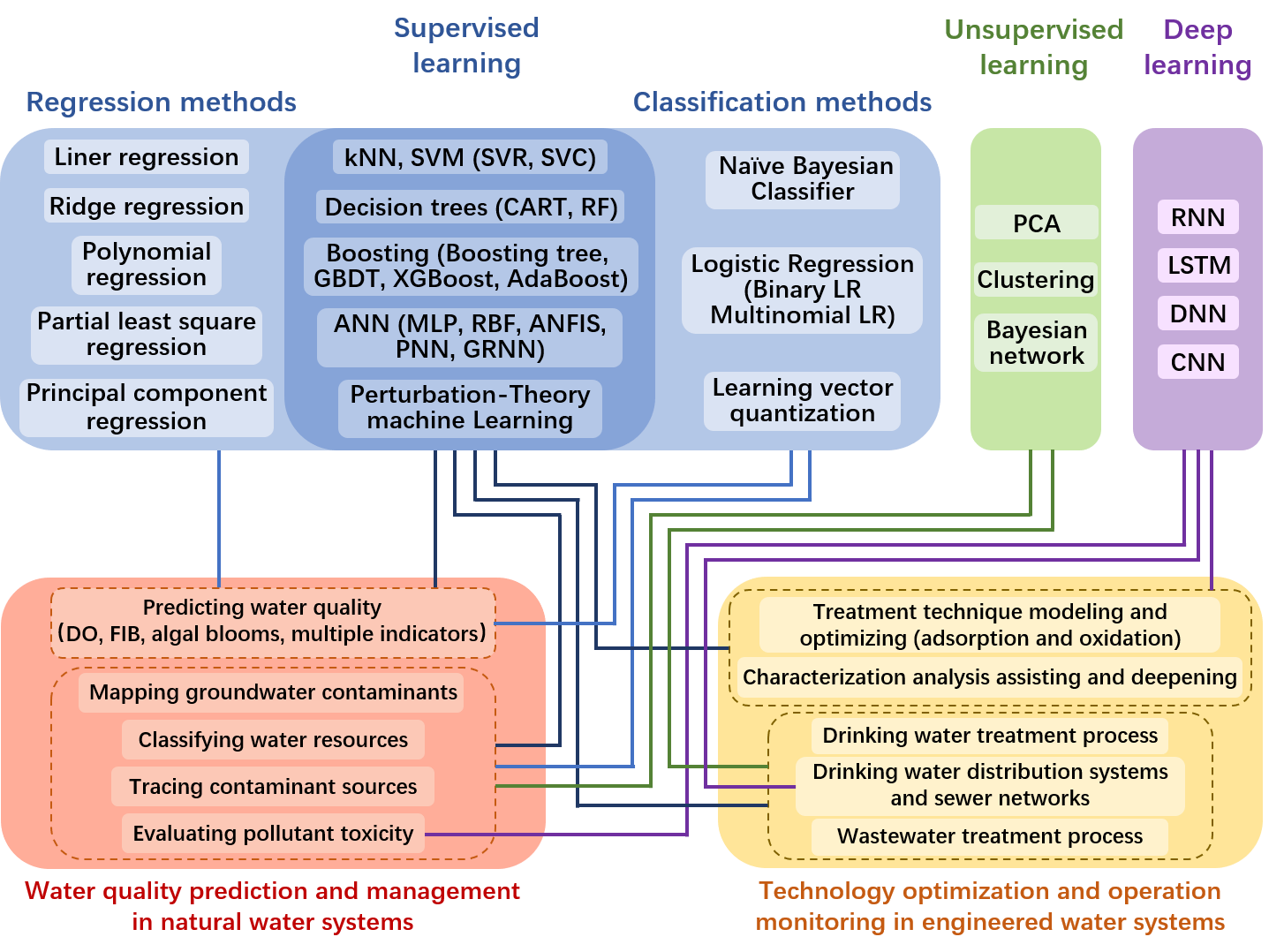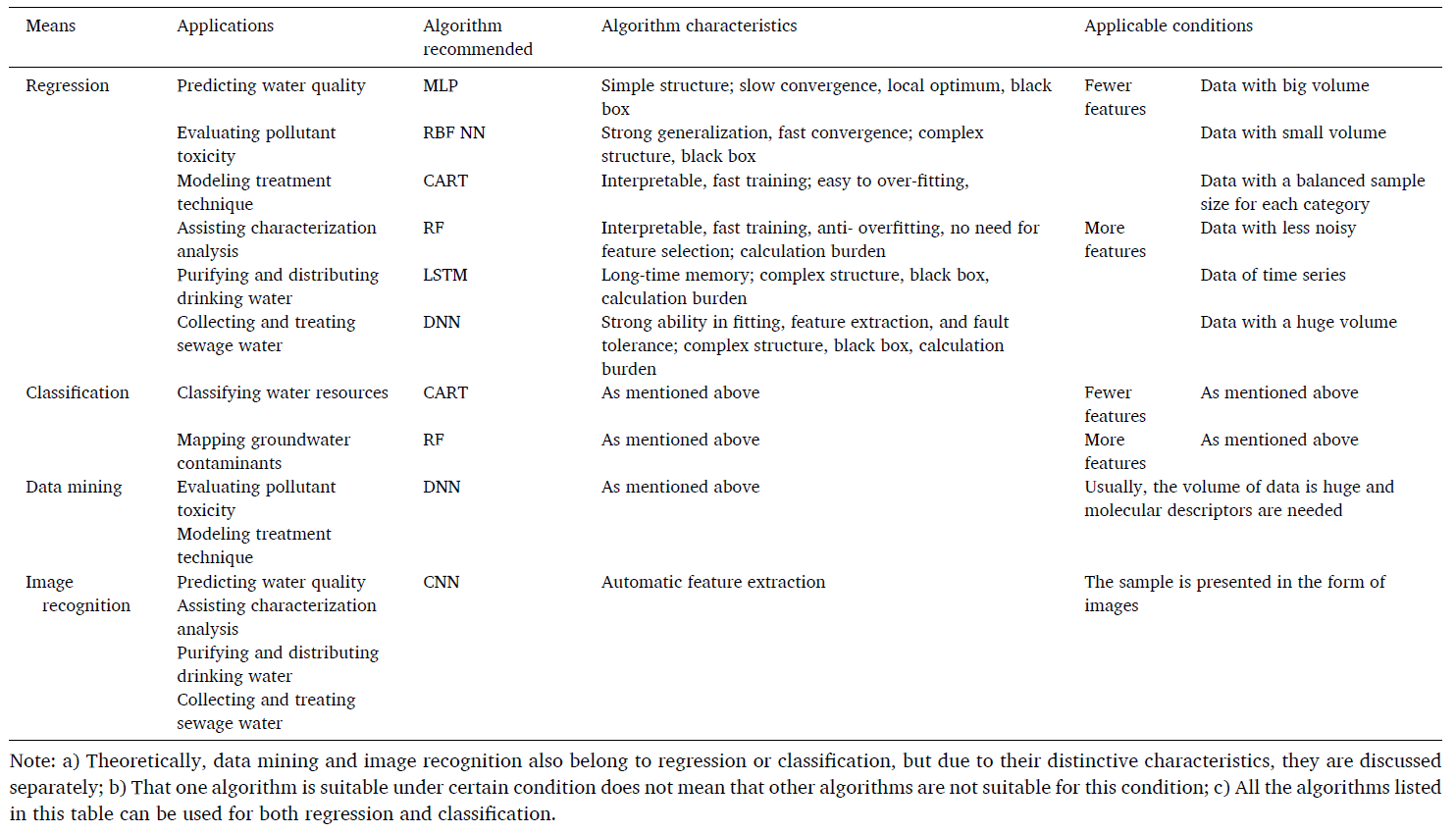2022-04-08 12:09:22
Professor HUANGFU Xiaoliu’ team from the College of Environment and Ecology, has newly published a review on Machine learning in natural and engineered water systems inWater Research, a top academic journal in the field of environment. In this paper,the establishment of machine learning models was briefly introduced. The development and current applications of machine learning in natural and engineered water systems were comprehensively summarized. The advantages and disadvantages of various algorithms were analyzed based on different applications and data characteristics. Suggestions for intelligent development of water science with machine learning were made. This review provides references for solving a wider range of water-related problems and brings further insights into the intelligent development of water science.
https://www.sciencedirect.com/science/article/pii/S0043135421008617?via%3Dihub

Graphic Abstract

Abstract
Water resources of desired quality and quantity are the foundation for human survival and sustainable development.To betterprotect the water environment and conserve water resources, efficient water management, purification, and transportation are of critical importance.In recent years, machine learning (ML) has exhibited itspracticability, reliability, and high efficiency in numerous applications; furthermore, it has solved conventional and emerging problems in both natural and engineered water systems. For example, ML can predict various water quality indicators in situ and real-time by considering the complex interactions among water-related variables. ML approaches can also solveemerging pollution problemswithproven rulesoruniversal mechanismssummarized from the related research.Moreover, by applying image recognition technology to analyze the relationships between image information and physicochemical properties of the research object, ML can effectively identify and characterize specific contaminants.In view of the bright prospects of ML,this review comprehensively summarizes the development of ML applications in natural and engineered water systems. First, the concept and modeling steps of ML are briefly introduced, including data preparation, algorithm selection and model evaluation. In addition, comprehensive applications of ML in recent studies, including predicting water quality, mapping groundwater contaminants, classifying water resources, tracing contaminant sources, and evaluating pollutant toxicity in natural water systems, as well as modeling treatment techniques, assisting characterization analysis, purifying and distributing drinking water, and collecting and treating sewage water in engineered water systems, are summarized. Finally,the advantages and disadvantages of commonly used algorithms are analyzed according to their structures and mechanisms, and recommendations on the selection of ML algorithms for different studies, as well as prospects for the application and development of ML in water science are proposed. This review provides references for solving a wider range of water-related problems and brings further insights into the intelligent development of water science.
Aims
This work aimed to (i) introduce the concept andestablishment of machine learning models; (ii) review therepresentative applications of machine learning in studies on the water environment; (iii) compare the advantages and disadvantages of various algorithms in dealing with different water-related researches; (iv) make perspectives on intelligent development of water science with machine learning.

Figure.Common machine learning algorithms and their applications in natural and engineered water systems.

Table. Recommendations on the selection of ML algorithms in different research directions of water science.
Conclusion
The representative applications of machine learning in the natural water environment mainly include predicting the water quality of natural waters, mapping groundwater contaminants, classifying water resources by various standards, tracing contaminant sources, and evaluating pollutant toxicity. In the social water cycle, machine learning techniques are also applied in modeling and optimizing the adsorption and oxidation treatment techniques, assisting characterization analysis, purifying and distributing drinking water, and collecting and treating sewage water. The combination of ML with water science was found to be realized primarily in the following manners:i) predicting the status of desired contaminants based on analyzing their interactions with other water-related parameters; ii) Mining big data from previous studies were used to summarize universal rules and mechanisms, thus guiding similar reactions or processes; iii) Image recognition technology was appliedto analyze the relationships between the image information and physicochemical properties of the research object, thus characterizing water quality, identifying specific contaminants,and detecting equipment faults in engineered water systems. To make ML technology more accessible to environmental researchers, joint efforts in terms of algorithm development, data curation, and interdisciplinary cooperation are required: i) algorithms with simple structures, high performance, and strong interpretability are encouraged to be developed; ii) the graphical user interface or user-friendly data analytics tools designed specifically for water-related studies are welcomed; iii)the concept of open-source data and the sharing of data is expected; iv) interdisciplinary communication and cooperation between the water research community and data researchers are encouraged.